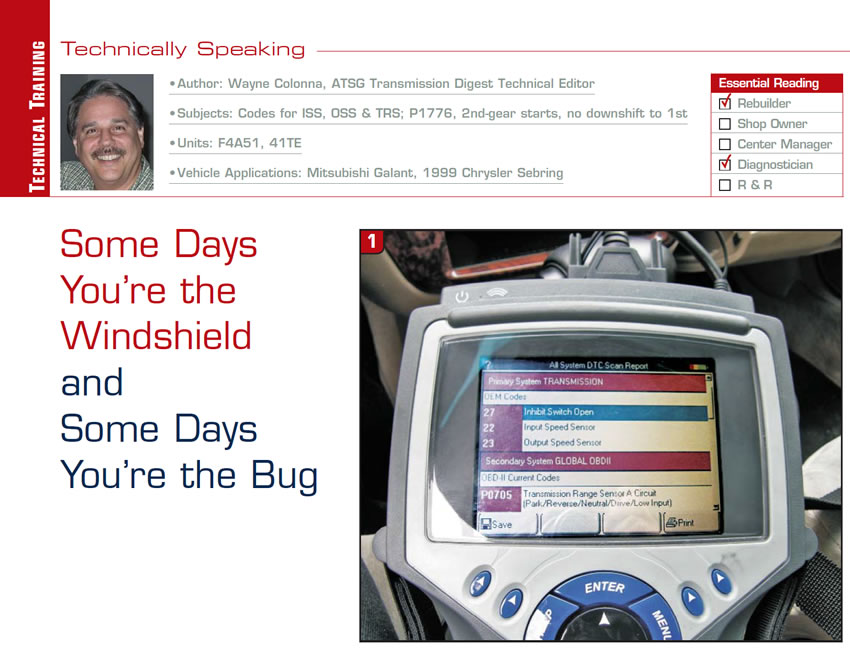
Technically Speaking
- Subjects: Failsafe with codes for ISS, OSS & TRS; P1776 code with 2nd-gear starts and no downshift to 1st
- Units: F4A51, 41TE
- Vehicle Applications: Mitsubishi Galant, 1999 Chrysler Sebring
- Essential Reading: Rebuilder, Diagnostician
- Author: Wayne Colonna, ATSG, Transmission Digest Technical Editor
Recently I visited two different transmission shops here in Miami that made me think of the phrase, “Some days you’re the windshield and some days you’re the bug!”
The first was at Luis Zabala’s shop, where it’s not uncommon to have a Mitsubishi Galant with an F4A51 transmission come into the shop sporting codes for the input- and output-speed sensors and the transmission range sensor (Figure 1). Of course, the vehicle is in failsafe with these codes.
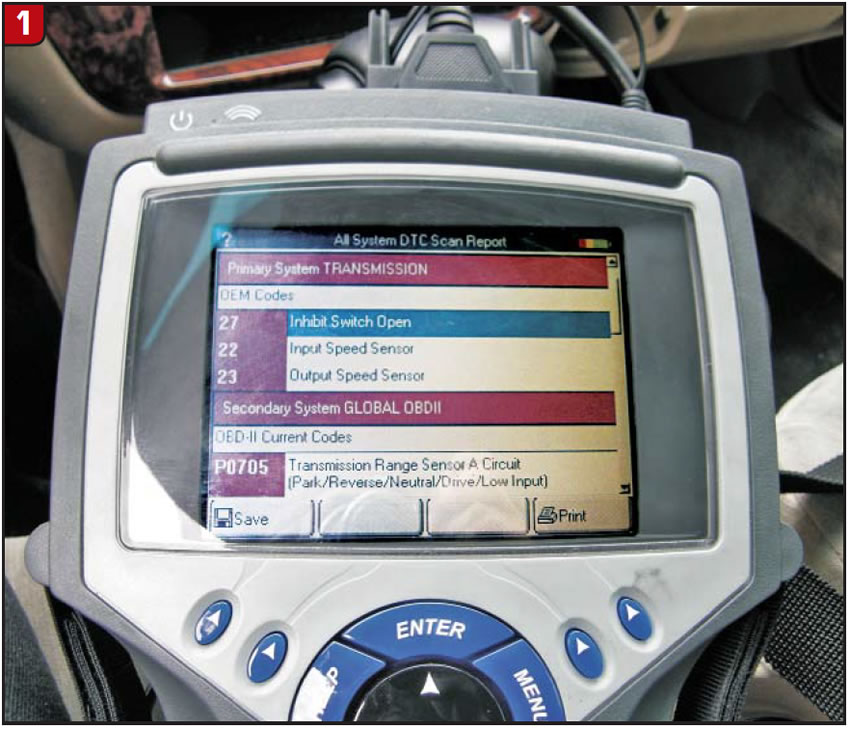
When you look at a wiring schematic similar to the one shown in Figure 2 you discover that one fuse powers all three of these circuits.
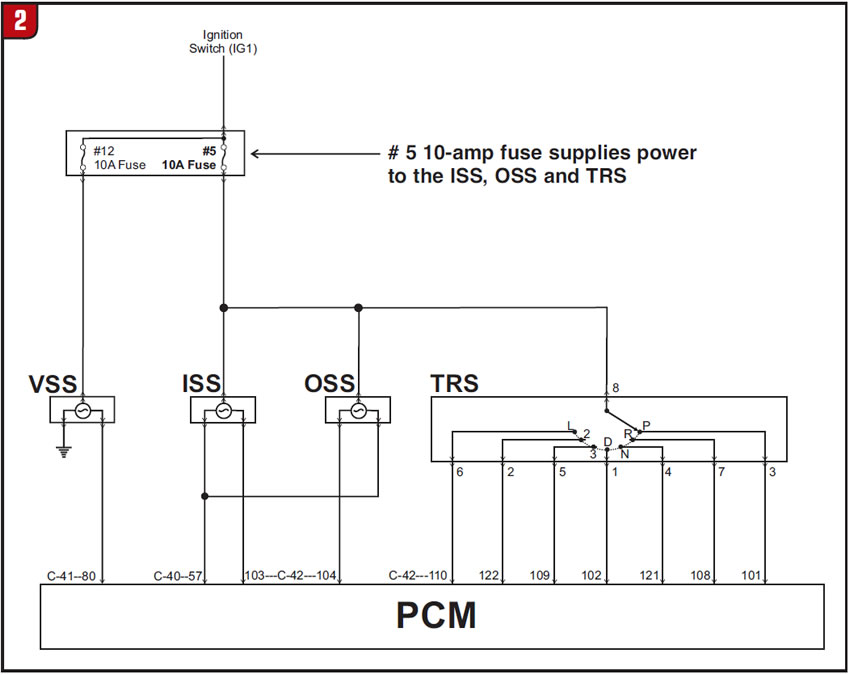
With the ignition on the fuse checks good on one side but has no power on the other, confirming a blown fuse (figures 3 and 4). So either the wire from this leg of the fuse to the ISS, OSS and TRS has been shorted or one of the three components on this circuit has shorted.
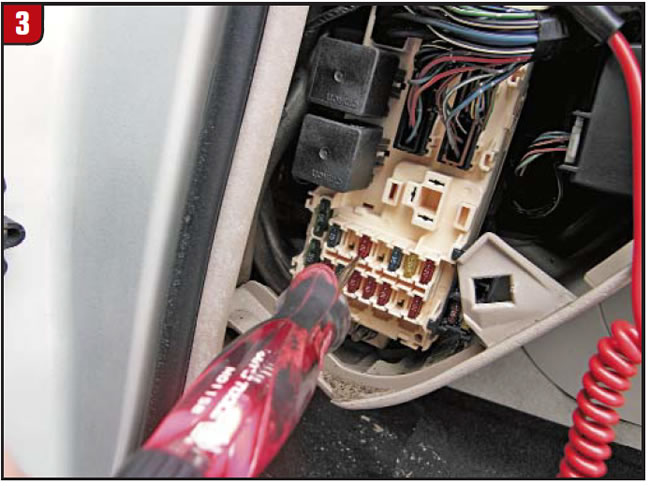

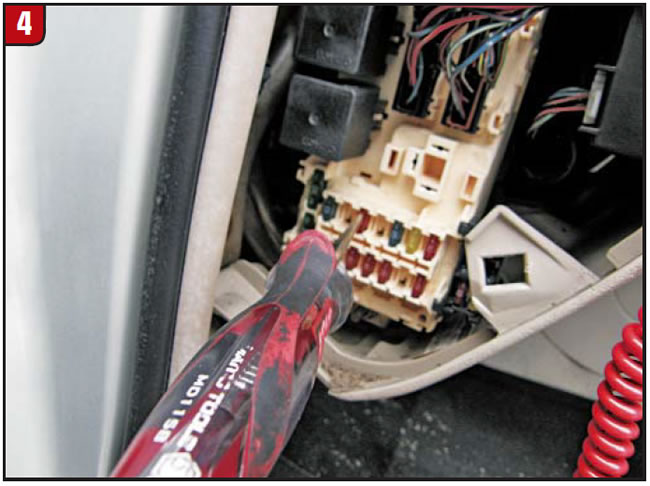
At this point one could take several different approaches, one of which would be to simply unplug them all (Figure 5), install a new fuse, turn the ignition on and check the fuse.
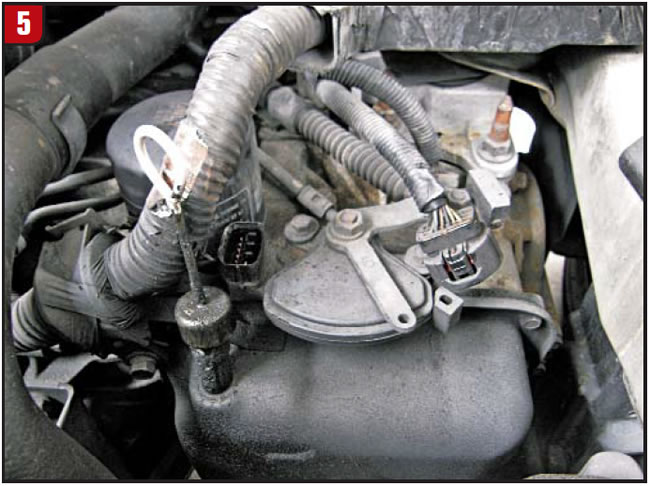
This could verify the circuit itself being shorted. But if the fuse does not blow (Figure 6), plug in each sensor to see which one is causing the fuse to blow. In most instances this simple diagnostic routine locates the offending component quickly. In some instances it requires warming the engine so you can perform the same test quickly while the sensors are hot.
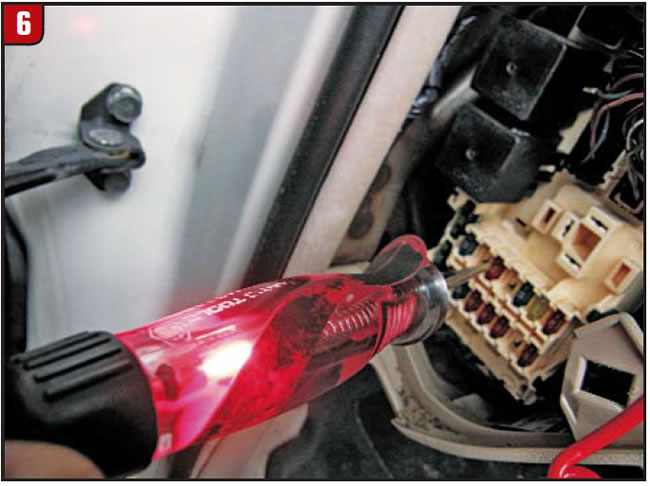
The other car, at Ralph Abraham’s shop, was a 1999 Chrysler Sebring with a 41TE transmission that would produce a P1776 code only after the car had been driven a few hundred miles. In the meantime, after the transmission was hot it would not downshift to first. You would come to a stop and the transmission would drop down to only second gear, as you can see by the scan data in figures 7 and 8. No codes, no limp; take off and it would shift nicely to third, to fourth and to a full TCC application. Lightly brake to a stop and you could watch and feel it downshift through the gears to 2nd and hold 2nd at a full stop. Pull it into manual low and it would go to first. You could do this time after time again all day – no codes, no limp.
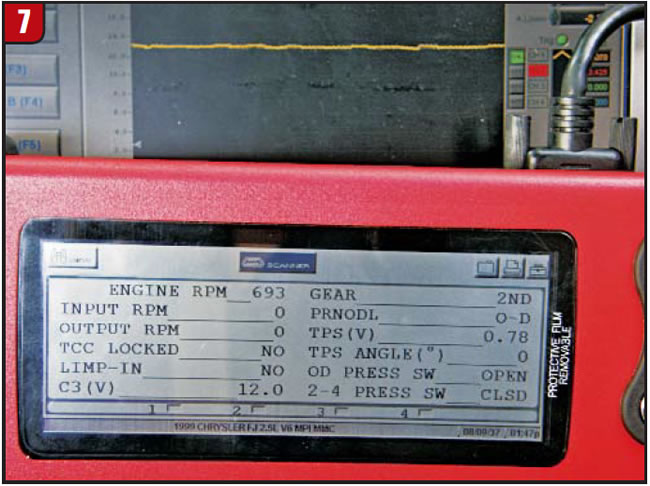

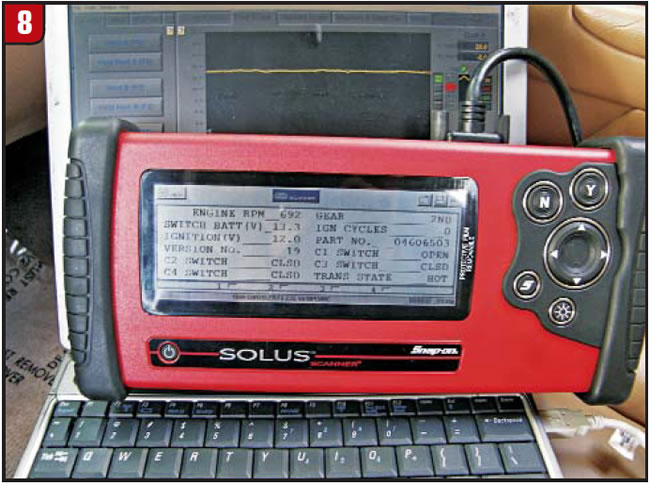
Ralph had replaced the valve body, the TCM and the wire between the TCM and solenoid body for the L/R solenoid. and he also replaced the transmission, none of which corrected the problem.
The transmission still had second-gear starts once hot. With the short time I had with the car I was able to monitor the L/R solenoid and saw proper fly-back voltage when it would turn off during a TCC release, the TRS monitored correctly, and the speed sensors checked OK.
Nothing I observed seemed to give me a clue to the second-gear-start problem. Code 1776 never appeared, and the valve body that was in the car originally did not show any of the solenoid switch-valve problems normally responsible for this code.
With no more time on my hands I had to leave Ralph no better than when I arrived. He later informed me that he re-soldered the wire for the L/R solenoid, which finally took care of this persistent pain of a problem. I don’t know how to explain this other than one day you’re the windshield and this day I was the bug!














